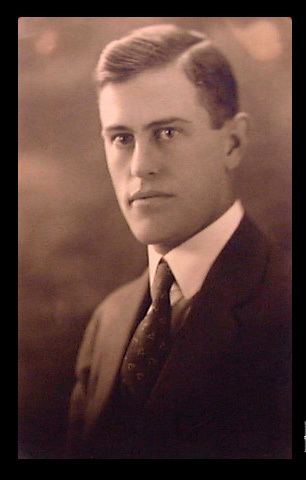Name Donald Hall Role Engineer | Aircraft designed Ryan NYP | |
 | ||
Occupation American aerospace engineer Education Polytechnic Institute of New York University | ||
Donald Albert Hall was a pioneering aeronautical engineer and aircraft designer who is most famous for having designed the Ryan NYP (known commonly as The Spirit of St. Louis) in only sixty days.
Contents
Early years
He was born in Brooklyn, New York on December 7, 1898. He attended the Manual Training High School in Brooklyn, and graduated from the Pratt Institute with a certificate in mechanical engineering in 1917.
Aviation career
He worked for the Curtiss Aeroplane and Motor Company, Elias & Brothers, and L.W.F. Engineering before moving to Santa Monica, California in 1924 to work for Douglas Aircraft.
He left Douglas Aircraft in 1926 to become an aviation cadet in the U.S. Army Air Corps, but did not become a military pilot. He returned to Douglas Aircraft, and began working part-time for Ryan Airlines in San Diego. In 1926, Ryan Airlines changed ownership when T. Claude Ryan sold his half of the business to Benjamin Franklin Mahoney. At that time Hall accepted the position of chief engineer.
The Spirit of St. Louis
Only days later, Ryan Airlines received an inquiry from Robertson Aircraft Corp. of St. Louis asking if they could design and build an aircraft capable of flying nonstop from New York to Paris. Donald Hall signed off on the inquiry. Ryan Airlines responded in the affirmative and after all the other potential manufacturers had said no, Charles A. Lindbergh finally traveled to San Diego to inspect the Ryan Airlines facility. There he met Donald Hall for the first time. After touring the facility with the new owner Benjamin Franklin Mahoney, Lindbergh met and discussed the project with Donald A. Hall in his second story office. Lindbergh wanted to decide if the company could really deliver on the proposed aircraft.
Lindbergh later stated in his Pulitzer Prize winning book, The Spirit of St. Louis, that the decision to go with Ryan Airlines would depend primarily on his estimate of the chief engineer, Donald Hall. He found a true partner in Donald Hall and the men at Ryan Airlines, so an agreement was finalized and the two men began working closely to design and construct the aircraft in only sixty days.
The final aircraft was known as the Ryan NYP (registration number N-X-211) which captured popular imagination as the Spirit of St. Louis in May 1927 by flying nonstop from New York to Paris. Charles A. Lindbergh would become a worldwide celebrity because of this famous flight and aviation would become much more popular around the globe.
Hall left Ryan Airlines in 1929 after the company became Mahoney-Ryan Airlines and later relocated to St. Louis.
Later career
In 1932, he formed Hall Aeronautical Research and Development Company, and designed and built the Hall X-1. This was a tandem wing design for which Hall held the patent. He closed this company due to financial problems, and joined Consolidated Aircraft Corporation where he was involved in the design of the B-24 Liberator bomber. He was discharged by Consolidated (then known as Convair) during the defense cutbacks following World War Two.
In 1952, he became head of the Navy's helicopter division at North Island, San Diego. He worked there in research until 1963.
In 1958, he was part of a team, along with Barry Bernstein and Horace M. Trent, that made the discovery of what causes a bullwhip’s crack. At the time, it was thought to be caused by leather in the tip smacking against other leather as it curled back in on itself. Bernstein, Trent, and Hall proved that it was really the whip exceeding the sound barrier.
Death
Donald Hall died of a heart attack in 1968 and was survived by his wife and only son. The New York Times and other major newspapers wrote extended obituaries for him once his death was publicly announced.
